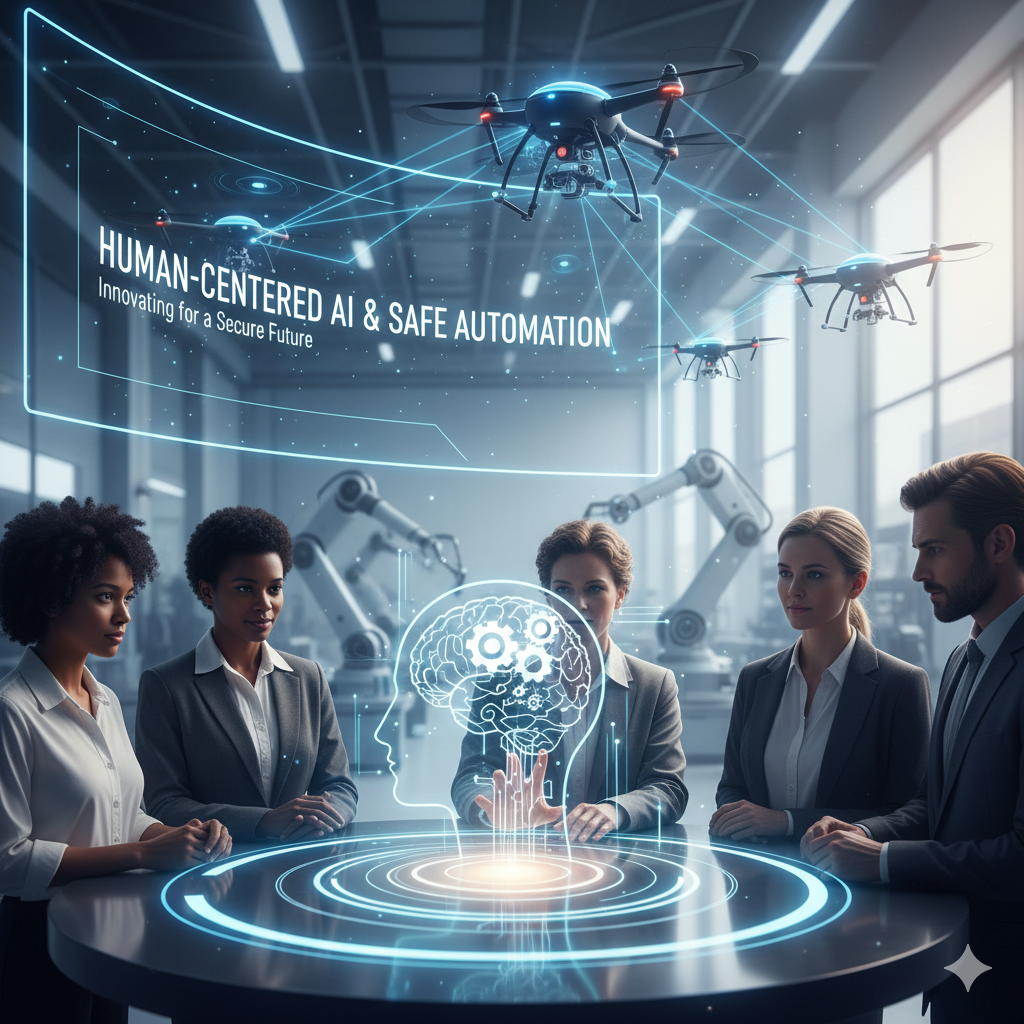Human-Centered AI & Safe Automation is one of the major trends that is becoming extremely influential with the fast-growing automation and robotics in 2025.
This solution guarantees that robots and AI systems are not only strong but also safe, reliable, and made to cooperate easily with humans.
📌 What is Human-Centered AI?
Human-Centered AI (HCAI) refers to the development of AI systems that prioritize human needs, safety, and comfort.
- Instead of HCAI is to be a source of help for people, thus intelligent systems should be created in such a way that users find them understandable, predictable, and safe to interact with.
That are:
- Transparent and understandable AI decision-making
- The risk of errors minimized
- Human and machine interactions conducted safely
- Considering human comfort and behavior in designs
- Basically, HCAI is all about humans being the center of technology.
🛡️ What Is Safe Automation?
Safe automation is the implementation of a robot or an automated system that can work autonomously without the eventuality of causing injures or harm to humans. It is also about the adoption of certain measures such as safety features, safety standards, and smart controllers to ensure the machine is behaving safely and in the correct manner, especially in the presence of humans.
Some of these measures are:
- Safety sensors on robots
- Emergency stop features
- Collision-avoidance systems
- Controlled movement speeds
- Predicting the behavior of the person interacting with the AI system using AI
- The ultimate aim is the development of automation systems that are capable of retaining the user’s trust, being transparent, and reliable.
🔍 Why Human-Centered AI & Safe Automation Matter in 2025
- Closely Collaborative Robots and Human Beings
With the large-scale introduction of cobots, service robots, and humanoid robots in factories, warehouses, and homes, securing a safe interaction has emerged as a requirement.
- Trust Is a Key Factor
New technology is more readily accepted if users feel secure and have control.
HCAI provides a means of trust by making AI:
- easy to apprehend
- predictable
- less scary
- Regulations & Standards Are Increasing
- Authorities and industries already implement safety regulations for AI.
- Human-centered design facilitates the process of conforming to these new worldwide standards.
- Reduces Errors & Accidents
User-friendly AI for the automation system helps in placing fewer mistakes by the system through:
- grasping the situation
- avoiding doing unsafe actions
- understanding human behavioral patterns
- Workplaces become safer and more productive as a result of this.
🧠 How Human-Centered AI Works in Robotics
✔ Predictable Movements
The movements of a robot are understandable by humans – the robot performs smooth and slow movements when it is near a human, but if it is alone it can operate faster.
✔ Social Awareness
There are some robots that utilize AI to identify the gesture of a person, the tone of the voice, or the distance.
✔ Explainable AI (XAI)
An AI system that gives explanation of the decision it arrived at thereby reducing bewilderment and the risk factor.
✔ Adaptive Behavior
Robots change their speed, grip, or way depending on if a human is there or not.
🏭 Real-World Uses of Safe Automation
- Factories: Cobots that stop short if a worker comes too close
- Warehouses: Robots carefully moving through the area where workers are
- Hospitals: Robots that help without causing danger to the patients
- Homes: Service robots that recognize human movement and do not bump into people
- Automation becomes human-friendly, not just efficient.
